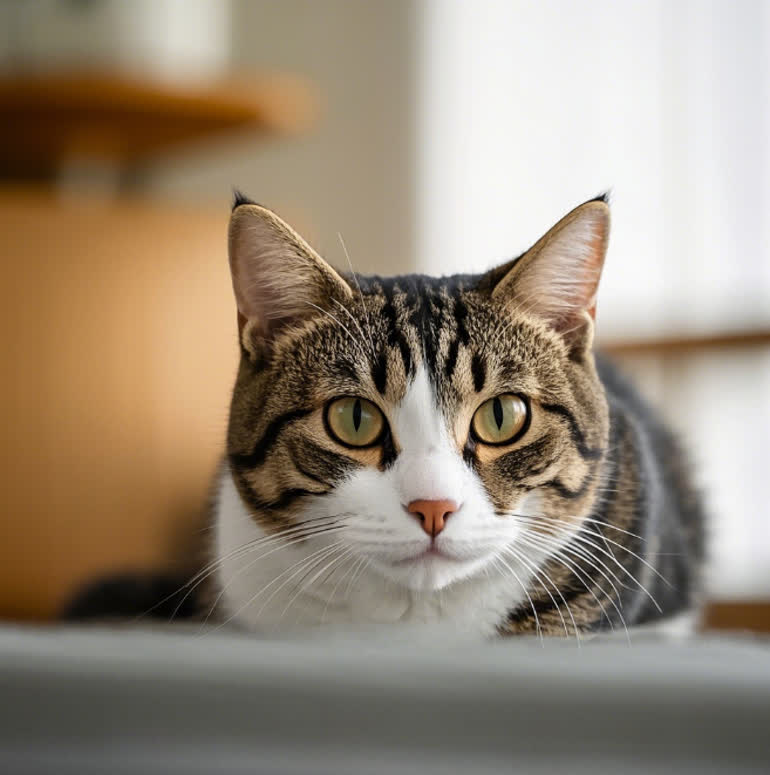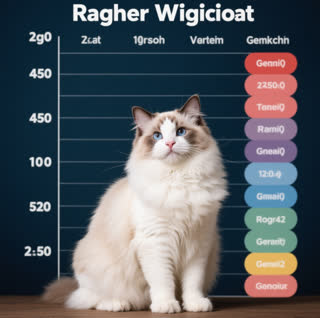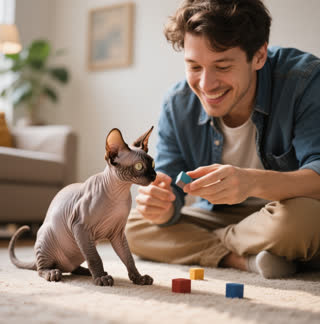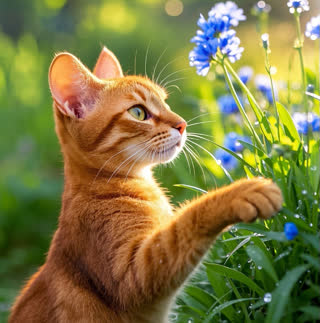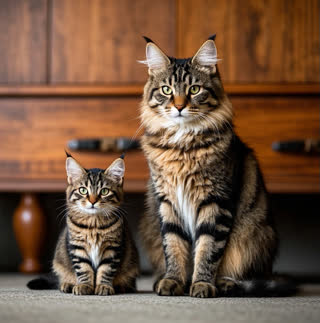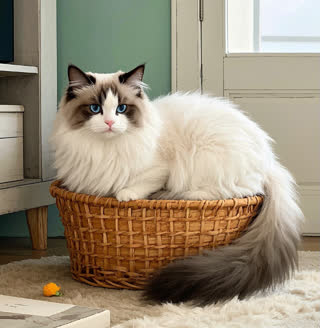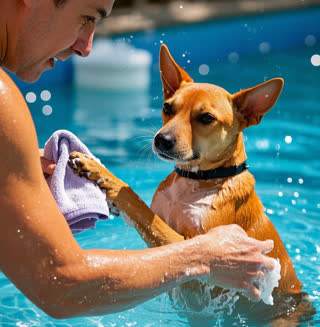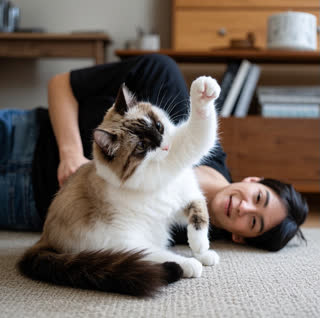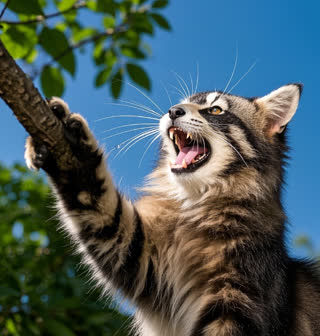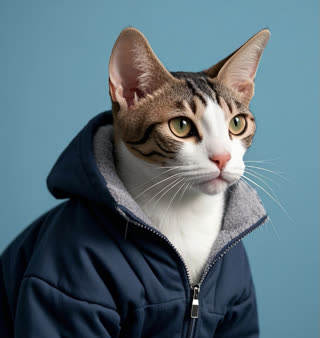If you’ve ever found yourself sneezing or itching around cats but still dream of owning one, you’re not alone. Millions of Americans struggle with cat allergies, yet the allure of feline companionship remains strong. While no cat breed is entirely hypoallergenic, certain breeds produce fewer allergens, making them more tolerable for sensitive individuals. In this guide, we’ll explore the science behind cat allergies, debunk common myths, and introduce the top breeds that may help you enjoy a purring friend without the sniffles.
Understanding Cat Allergies: The Real Culprit
Contrary to popular belief, cat allergies aren’t caused by fur. Instead, they stem from a protein called Fel d 1, which cats secrete in their saliva, dander (dead skin cells), and urine. When cats groom themselves, Fel d 1 spreads through their fur and into the environment, clinging to furniture, clothing, and even air particles. This explains why allergies can flare up even if you don’t touch a cat directly.
According to the Asthma and Allergy Foundation of America (AAFA), up to 30% of Americans are allergic to cats, with reactions ranging from mild sneezing to severe asthma attacks. The good news? Some cats naturally produce less Fel d 1, reducing the risk of symptoms.
Do Hypoallergenic Cats Actually Exist?
The short answer: No. All cats produce Fel d 1, but certain breeds are less likely to trigger allergies. Factors like genetics, coat type, and grooming habits influence allergen levels. For example, neutered male cats and females generally produce less Fel d 1 than intact males. Additionally, breeds with shorter or sparse coats may shed fewer allergens, though this isn’t guaranteed.
A 2024 study in the European Journal of Allergy and Clinical Immunology noted significant variation in Fel d 1 production among breeds, reinforcing the idea that some cats are more allergy-friendly than others.
The Top Hypoallergenic Cat Breeds
While no breed is 100% safe, these cats are widely recognized for causing fewer allergic reactions.
1. Balinese
Often called the “long-haired Siamese,” Balinese cats are celebrated for their silky, single-layer coats that don’t mat easily. Despite their elegant appearance, they shed minimally and require weekly brushing to keep allergens at bay. Balinese cats are also intelligent, social, and thrive in households with children or other pets.
Why They’re Allergy-Friendly: Breeders report lower Fel d 1 levels, and their lack of an undercoat reduces dander buildup.
2. Siberian
Don’t let their thick triple coat fool you—Siberians are surprisingly low-allergen. Research suggests they produce significantly less Fel d 1 than other breeds. Weekly brushing helps manage shedding, and their friendly, playful personalities make them a hit with families.
Fun Fact: Siberians are one of the oldest cat breeds, originating in Russia’s harsh climates.
3. Sphynx
The hairless Sphynx is a popular choice for allergy sufferers. Without fur, they shed little dander, though they still produce Fel d 1 through skin oils. Regular bathing and wiping can minimize allergens. Sphynxes are affectionate, outgoing, and crave human attention.
Note: While they’re often tolerated better, some people still react to their skin proteins.
4. Devon Rex
Known for their curly, short coats and elf-like ears, Devon Rex cats have fine hair that traps less dander. They’re low-shedding and require minimal grooming. These energetic, mischievous cats love climbing and interacting with their owners.
5. Cornish Rex
Similar to Devon Rex, Cornish Rex cats have curly, close-to-the-body coats that reduce shedding. They’re active, vocal, and thrive in homes where they can be the center of attention.
6. Oriental Shorthair
With sleek, short coats and large ears, Oriental Shorthairs are low-shedding and easy to maintain. They’re highly social, intelligent, and need mental stimulation to prevent boredom.
7. Russian Blue
Russian Blues have dense, plush coats that shed moderately. They’re known for producing lower Fel d 1 levels and are calm, gentle, and reserved around strangers.
8. British Shorthair
This stocky breed has a thick, double coat that requires weekly brushing. British Shorthairs are laid-back, adaptable, and tolerate quiet households well.
9. Bengal
Bengals have short, soft coats with striking leopard-like patterns. They’re active, curious, and may produce less Fel d 1 than other breeds. Early socialization is key to their friendly nature.
10. Javanese
A cousin of the Balinese, Javanese cats have medium-length coats and are known for low shedding. They’re talkative, affectionate, and enjoy interactive play.
11. Scottish Fold
With folded ears and a round face, Scottish Folds have dense fur that requires regular brushing. They’re calm, adaptable, and often bond closely with their owners.
12. Burmese
Burmese cats have short, glossy coats and are known for producing moderate Fel d 1. They’re social, people-oriented, and thrive on companionship.
Tips for Living with a Cat When You’re Allergic
Even with a hypoallergenic breed, managing allergies requires proactive care:
Groom Regularly: Brush your cat weekly to reduce loose fur and dander.
Keep Kitty Clean: Bathe your cat monthly (if they tolerate it) to remove allergens from their skin.
Air Purifiers: Use HEPA filters to trap airborne allergens.
Allergy-Proof Your Home: Vacuum carpets and upholstery frequently, and wash bedding in hot water.
Designated Zones: Keep the bedroom cat-free to create an allergen-safe space.
Final Thoughts: Finding Your Perfect Match
While no cat can eliminate allergies entirely, choosing a breed with lower Fel d 1 production and practicing good allergen control can make a world of difference. Remember, every cat is unique—spend time with a breed before committing to ensure compatibility. With patience and the right care, you can enjoy the love of a feline friend without sacrificing your health.
